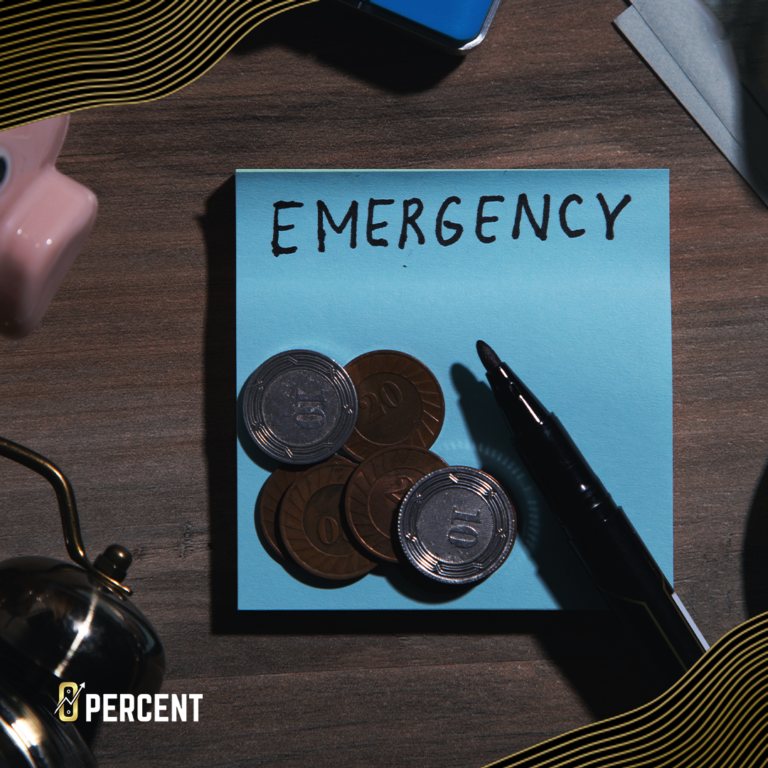
Angel Alvarez
Angel Alvarez Funding, 0 Percent Who is Angel Alvarez? From SpaceX to 0 Percent Angel is a remarkably well rounded individual who has had a
In today’s uncertain world, creating a strong financial safety net is crucial for individuals and families alike. Unexpected events such as job loss, medical emergencies, or accidents can have a significant impact on our finances. By building an emergency fund and ensuring against life’s risks, we can protect ourselves from the unforeseen and establish a solid foundation for financial security.

Before delving into the specifics, let’s first understand the importance of a financial safety net. Life is full of uncertainties, and no matter how well we plan, unexpected events can arise at any time. Without a safety net in place, a sudden expense or loss of income can quickly spiral into a financial crisis. However, by taking proactive steps to build a safety net, we can minimize the impact of these unforeseen events and safeguard our financial well-being.
An essential component of a financial safety net is an emergency fund. This fund serves as a financial cushion to cover unexpected expenses and acts as a buffer when facing an income disruption. Building an emergency fund involves the following steps:
An emergency fund is a pool of money set aside specifically to address unforeseen financial needs. It acts as a financial safety net, providing peace of mind and stability during times of crisis.
To determine how much to save, it’s important to set specific financial goals. Consider factors such as monthly expenses, income stability, and personal circumstances when setting your targets.
Financial experts recommend saving three to six months’ worth of living expenses in an emergency fund. Calculate your monthly expenses and multiply that figure by the desired number of months to arrive at your target amount.
Once you have a target amount, consider how long it will take to save that sum. Set a realistic timeline that aligns with your income and expenses, and commit to regular contributions.
There are various strategies to save and build an emergency fund. Start by creating a budget to track your income and expenses, and identify areas where you can cut back and save more. Automate your savings by setting up automatic transfers to your emergency fund. Consider directing windfalls or bonuses toward your savings goal as well.
Building an emergency fund is just one aspect of creating a financial safety net. Another crucial element is insurance. Insurance helps protect against significant financial losses caused by unforeseen events. Here are some key points to consider:
Insurance is a contract between the insured and the insurance company, where the insured pays a premium in exchange for financial protection against certain risks. Insurance serves as a safety net by transferring the risk of financial loss to the insurer.
When building a safety net, several types of insurance are worth considering:
Health insurance provides coverage for medical expenses, ensuring that you have access to quality healthcare without facing exorbitant costs.
Life insurance offers financial protection for your loved ones in the event of your untimely demise. It can help cover funeral expenses, outstanding debts, and provide income replacement.
Disability insurance safeguards your income if you are unable to work due to a disability or illness. It ensures that you can maintain your financial obligations and standard of living during such challenging times.
Property insurance protects your home and belongings from unexpected events such as fire, theft, or natural disasters. It provides financial compensation for repair or replacement costs.
Auto insurance offers protection against damage or theft of your vehicle, as well as liability coverage in case you cause an accident. It provides financial assistance for vehicle repairs and potential legal expenses.
When considering insurance, it’s important to evaluate your specific needs and circumstances. Factors such as age, dependents, income level, and personal assets play a significant role in determining the appropriate coverage.
To build a comprehensive safety net, select insurance policies that align with your needs. Consult with insurance professionals to understand the options available and choose policies that provide adequate coverage at a reasonable cost.
While emergency funds and insurance are essential for financial security, maximizing savings and investments can further strengthen your safety net. Here are key points to consider:
Look beyond traditional savings accounts and consider investment options that offer higher returns. Explore low-risk options such as bonds, index funds, or certificates of deposit. Consult with a financial advisor to identify investment opportunities that match your risk tolerance and financial goals.
Diversify your investment portfolio to spread the risk. Invest in a mix of assets such as stocks, bonds, and real estate to protect against market fluctuations. Regularly review and rebalance your portfolio to maintain an optimal asset allocation.
Creating a financial safety net goes hand in hand with long-term financial planning. Set clear goals for retirement savings, education funds, or other long-term objectives. Consider working with a financial planner to develop a comprehensive plan tailored to your specific needs.
Building a safety net also means preparing for the future. Contribute to retirement accounts such as 401(k)s or IRAs to secure a comfortable retirement. Take advantage of employer matching contributions whenever possible to maximize your savings.
Debt can undermine your financial security, making it crucial to manage it effectively. Consider the following strategies:
Debt can lead to financial stress and limit your ability to build a safety net. High interest rates and excessive debt burdens can eat into your savings and hamper financial progress. Take a proactive approach to manage and reduce debt.
Prioritize debt repayment by focusing on high-interest debts first. Consider debt consolidation or refinancing options to lower interest rates and simplify payment schedules. Create a budget that allocates a portion of your income toward debt repayment.
Building and maintaining good credit
A good credit score is vital for accessing favorable interest rates and obtaining credit when needed. Pay bills on time, avoid maxing out credit cards, and maintain a low credit utilization ratio to build and maintain good credit.
Building a financial safety net is an ongoing process. Regularly review and reassess your safety net to ensure it remains effective. Consider the following:
Life circumstances change, and so do insurance needs. Review your insurance policies annually or when major life events occur, such as marriage, having children, or purchasing property. Update your coverage accordingly.
As your life and financial circumstances evolve, reevaluate your emergency fund needs. Changes in income, expenses, or family dynamics may require adjusting the target amount. Periodically review and readjust your savings goals accordingly.
Be flexible with your financial goals and adapt them as circumstances change. Prioritize and adjust your goals to align with your current needs and aspirations. Regularly monitor your progress and make necessary adjustments.
When in doubt, seek professional financial advice. A certified financial planner can provide personalized guidance and help you navigate complex financial decisions. Their expertise can assist you in building a robust and effective safety net.
Building a financial safety net is an essential step toward achieving financial security and peace of mind. By establishing an emergency fund, acquiring appropriate insurance coverage, maximizing savings and investments, managing debt effectively, and regularly reassessing your safety net, you can protect yourself against life’s uncertainties. Remember, creating a safety net is a continuous process that requires dedication and careful planning. Start taking steps today to build a strong foundation for a secure financial future.

A1. Financial experts recommend saving three to six months’ worth of living expenses in an emergency fund. Calculate your monthly expenses and multiply by the desired number of months.
A2. It’s generally advisable to have a small emergency fund while simultaneously focusing on high-interest debt repayment. Once high-interest debts are under control, shift the focus to building a fully funded emergency fund.
A3. Without insurance, you bear the full financial burden of unexpected events. Medical expenses, property damage, or liability claims can be financially devastating. Insurance provides protection against such risks.
A4. An emergency fund should be easily accessible and low risk. While it’s wise to explore higher-yield savings options, investing an emergency fund in high-risk assets is generally not recommended.
A5. It’s never too late to start building a safety net. While your approach may differ slightly, focusing on retirement savings, reducing debt, and ensuring adequate insurance coverage can still provide financial security. Seek professional advice tailored to your circumstances.

Angel Alvarez Funding, 0 Percent Who is Angel Alvarez? From SpaceX to 0 Percent Angel is a remarkably well rounded individual who has had a
Sign up for our newsletter to stay in the loop.
Sign up to receive news & updates!
Sign up to receive news & updates!